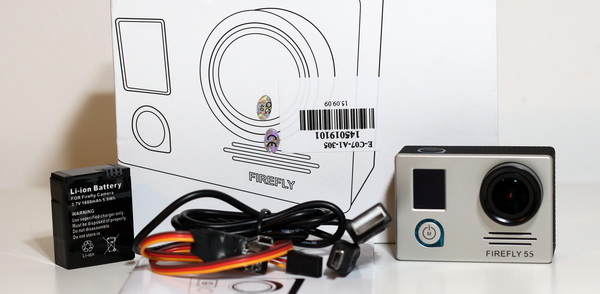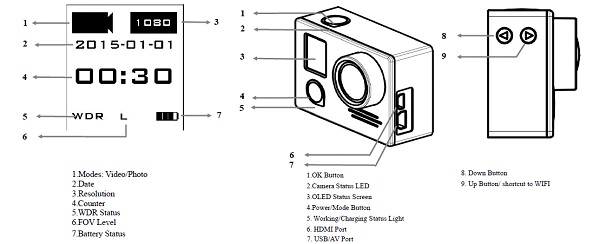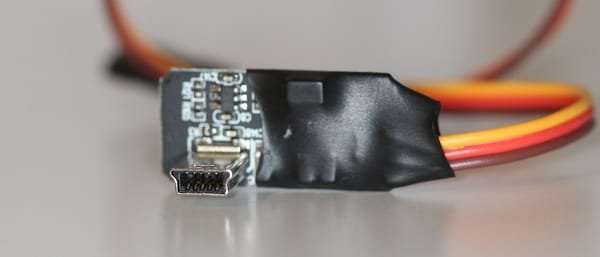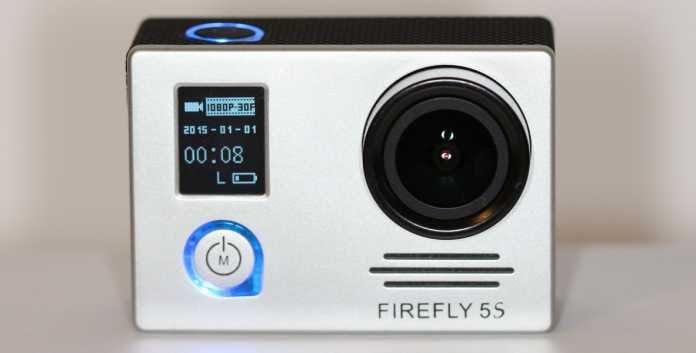There are many action cameras like this FireFly 5s on the market, and it is tough to evaluate them only by the specs. Most are very similar, based on the same hardware just sold under different “brand” names. What I have first learned regarding these Chinese GoPro clones is that the number of megapixels does not count too much in terms of image quality.
The newer version of this quadcopter camera was just announced and is called Firefly 6s. This improved model has electronic image stabilization and will allow 4k video resolution.
Many action/sports cameras are sold as suitable for the first-person view too but, unfortunately, only a few of them truly are. Unlike other action camera models that I reviewed, this FireFly 5s is not just affordable but thanks to the included AV-out cable is suitable out of the box for FPV systems.
When this camera was offered for review by Elliot from GearBest I was thrilled because it was the missing piece of the puzzle I’m currently focused on. I want to convert my XK X380 Quad into one suitable for first-person view flights.
Hands-on FireFly 5s camera review
The content of the FireFly 5s’s package is very summary, without too many accessories. I found inside the box besides the camera: a 1600mAh battery, lens cap, USB charging/data cable, AV-out FPV cable, and English/Chinese user manual. The lack of mounting accessories makes it very hard to use this camera during sports activities like hiking/biking. This is why, in my opinion, this camera was mainly designed for aerial filming and FPV flights.
Firefly 5S camera highlights
- Novatek 966955 SoC;
- Sony 12MP CMOS image sensor;
- Up to 1080p/30fps video resolution;
- 0.65″ OLED display for settings;
- AV-out via micro USB for FPV flights;
- Built-in WI-FI connection;
- Autostart, time-lapse, and cycle loop recording;
- High capacity 1600mAh battery.
At first sight, the build quality of the camera is very good, and it is approximately the same size as the GoPro 3 camera. In the front of the camera, there is a tiny OLED screen that displays useful information like operation mode and configuration menus. For easy and intuitive operation, the camera has only four buttons: up, down, OK, and power ON/OFF.
For aerial photography, this FireFly 5s camera has a time-lapse mode that allows it to automatically capture images every 3, 10, or 30 seconds. For the best results, the camera has many fine-tuning options regarding image quality. Can be manually set the follows:
- Photo resolution (12MP, 8MP, or 5MP);
- ISO adjustment (AUTO, ISO 100, ISO 400 or ISO 1600), a higher value means more noise;
- Sharpness adjustment (high, medium or low);
- Color scheme (standard or vivid);
- Enable/Disable WDR mode (Wide Dynamic Range);
Firstly I tried to test the Firefly 5S camera with a regular 4GB micro card, but the camera warned me that it was “too slow,” and I had to switch to a faster 32GB class 10 card. The first shots had noticeably better image quality than those I made with other cheap GoPro clones.
The absence of light is the biggest challenge of the camcorders so I tested the camera in several light conditions. The video quality is great in good light, reducing in quality when the light fades or when I try to record videos indoor. I got some quality improvements in dark conditions when I activated the WDR functions.
Thanks to the Novatek 966955 imaging processor, this camera can record video at full HD 1080P video resolution at 30 fps.
While the camera is recording, blue LEDs flash on the front around the power button and also on the top around the OK button, so it is always clear when I’m capturing footage.
The FireFly 5s’ 1600mAh Li-on battery is removable, which is nice, so I can have an extra charged battery ready to swap when needed. The camera has about 2 hours of operation time per battery charge, which is pretty good, I think.
The Hawkeye Firefly 5S camera can be remotely controlled with any Android and iOS smartphone or tablet through the built-in Wi-Fi connection based on a Realtek chip. Via the “Firefly app” can be remotely started/stopped video recording and preview the captured videos and photos. BTW, I can also change some camera settings from my smartphone over Wi-Fi.
The auto start on USB power and cycle loop recording features are very useful when this camera is used as a dash-cam in a car. When the memory card reaches its full capacity, the camera automatically deletes the oldest file and continues to record till the camera is powered.
Yesterday, I tested the camera’s video out, and I can confirm that the latency is acceptable for common use but probably not fast enough to be used on racer quadcopters. The video signal standard can be set to PAL or NTSC via the “TV output” configuration menu.
Mine came with firmware version 1.0, it would be very useful as a software upgrade that will allow 90 and 180-degree image rotation and video bitrate settings.


